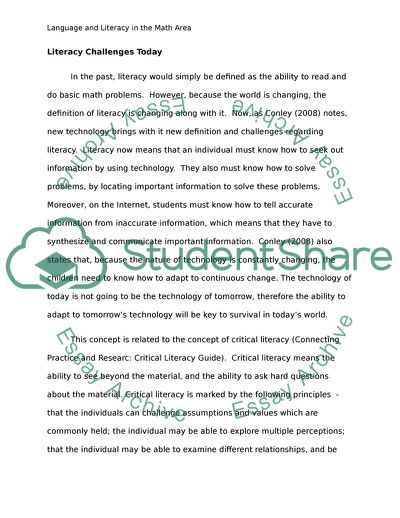Cite this document
(Language and Literacy in the Math Area Report Example | Topics and Well Written Essays - 1500 words - 1, n.d.)
Language and Literacy in the Math Area Report Example | Topics and Well Written Essays - 1500 words - 1. https://studentshare.org/education/1790786-education-math-literacy
Language and Literacy in the Math Area Report Example | Topics and Well Written Essays - 1500 words - 1. https://studentshare.org/education/1790786-education-math-literacy
(Language and Literacy in the Math Area Report Example | Topics and Well Written Essays - 1500 Words - 1)
Language and Literacy in the Math Area Report Example | Topics and Well Written Essays - 1500 Words - 1. https://studentshare.org/education/1790786-education-math-literacy.
Language and Literacy in the Math Area Report Example | Topics and Well Written Essays - 1500 Words - 1. https://studentshare.org/education/1790786-education-math-literacy.
“Language and Literacy in the Math Area Report Example | Topics and Well Written Essays - 1500 Words - 1”. https://studentshare.org/education/1790786-education-math-literacy.


